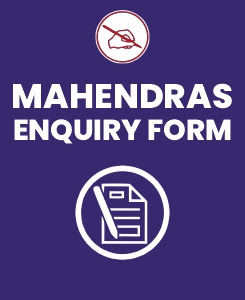Introduction:
IBPS PO exams are a tough challenge for most candidates, but with the right strategies and tricks, you can easily crack puzzles and seating arrangement questions. These topics, often seen as intimidating, are designed to test your logical reasoning and analytical skills. In this blog, we will guide you through the best tips and methods to master puzzles and seating arrangements, helping you boost your confidence and score high.
Table of Contents:
- Why Puzzles and Seating Arrangements are Crucial for IBPS PO
- How to Approach IBPS PO Puzzles and Seating Arrangements
- Top Tips to Solve IBPS PO Puzzles Quickly and Accurately
- Best Strategies for Seating Arrangements in IBPS PO Exam
- Linear Seating Arrangements
- Circular Seating Arrangements
- Complex Seating Arrangements
- Common Mistakes to Avoid in IBPS PO Puzzles and Seating Arrangements
- Time Management Tips for Puzzles and Seating Arrangements
- How to Practice Effectively for Puzzles and Seating Arrangements
- Conclusion: Crack IBPS PO with Confidence
Why Puzzles and Seating Arrangements are Crucial for IBPS PO:
Puzzles and seating arrangements are part of the reasoning section, which often holds significant weight in the IBPS PO exam. By mastering these topics, you can quickly solve multiple questions in a short time, boosting your overall score. They are not only a key component of the exam but also help you improve logical reasoning skills, which are important in other sections like DI (Data Interpretation) and Quantitative Aptitude.
How to Approach IBPS PO Puzzles and Seating Arrangements:To solve puzzles and seating arrangements easily, understanding the question pattern is key. These types of questions can be complex, but breaking them down into smaller, manageable parts will help. Here’s how you should approach them:
- Read the Entire Question: Before diving into solving, take a moment to read the entire question carefully to avoid missing any important clues.
- Identify the Key Information: Underline or jot down crucial points like the number of people involved, their positions, and the conditions.
- Visualize the Arrangement: Create a mental or physical diagram to represent the scenario. This makes it easier to visualize the relationships between different elements.
- Apply Logical Deductions: Start filling in the gaps step-by-step, using the information you’ve gathered, and apply logical deductions to eliminate possibilities.
- Top Tips to Solve IBPS PO Puzzles Quickly and Accurately:
- Understand the Puzzle Types: Familiarize yourself with different types of puzzles like seating arrangements, blood relations, and direction sense. Each puzzle has a different set of rules and can be tackled with specific techniques.
- Use Diagrams and Tables: Draw tables or seating charts to organize the information effectively. This will help you keep track of all conditions and relationships.
- Look for Direct Clues First: Start with the most direct clues in the question, as they help set up the initial framework for the puzzle.
- Don’t Overcomplicate: Sometimes, the simplest solution is the correct one. Avoid second-guessing your answers unless absolutely necessary.
- Practice Regularly: The more you practice, the better you’ll get at identifying the right approach quickly during the exam.
Best Strategies for Seating Arrangements in IBPS PO Exam:
Linear Seating Arrangements:
- There are typically two types: single-row and double-row seating arrangements. In both cases, use a logical approach and place the elements according to the conditions provided.
- Begin by placing the fixed positions and then fill in the remaining spots.
- These are slightly more complex. Identify the number of people and their relative positions in the circle.
- Make sure you consider both clockwise and counter-clockwise orientations to avoid errors.
Circular Seating Arrangements:
Complex Seating Arrangements:
- In some cases, multiple conditions are given (such as people sitting around a table with a few restrictions).
- You may need to break the problem down into sub-categories and solve each part step by step.
- Skipping Critical Information: Many candidates rush through the questions and miss out on important clues. Always read each condition carefully.
- Incorrect Assumptions: Avoid assuming anything that is not explicitly stated in the question.
- Confusing Relative Positions: When dealing with seating arrangements, ensure that the positions of people are interpreted correctly based on the directions (clockwise vs. counterclockwise).
- Poor Time Management: Don’t spend too much time on one question. If you’re stuck, move on and return to it later if time allows.
Time Management Tips for Puzzles and Seating Arrangements:
- Set a Time Limit: Aim to complete each puzzle in 2-3 minutes. Practice timed tests to develop a sense of how long you should spend on each question.
- Prioritize Simpler Questions: Identify and solve the easier questions first to gain quick points before tackling the more difficult ones.
- Use Elimination: In cases where you’re unsure, use the process of elimination to quickly narrow down the possible answers.
How to Practice Effectively for Puzzles and Seating Arrangements:
- Solve Mock Tests: Regular mock tests will help you get familiar with the format of the exam and improve your speed.
- Practice with Previous Year Papers: Analyzing past year questions will give you insights into common puzzle patterns and seating arrangement questions.
- Online Resources: Utilize online platforms offering puzzles and reasoning question banks to practice and track your progress.
Conclusion: Crack IBPS PO with Confidence





0 comments:
Post a Comment
MAHENDRA GURU